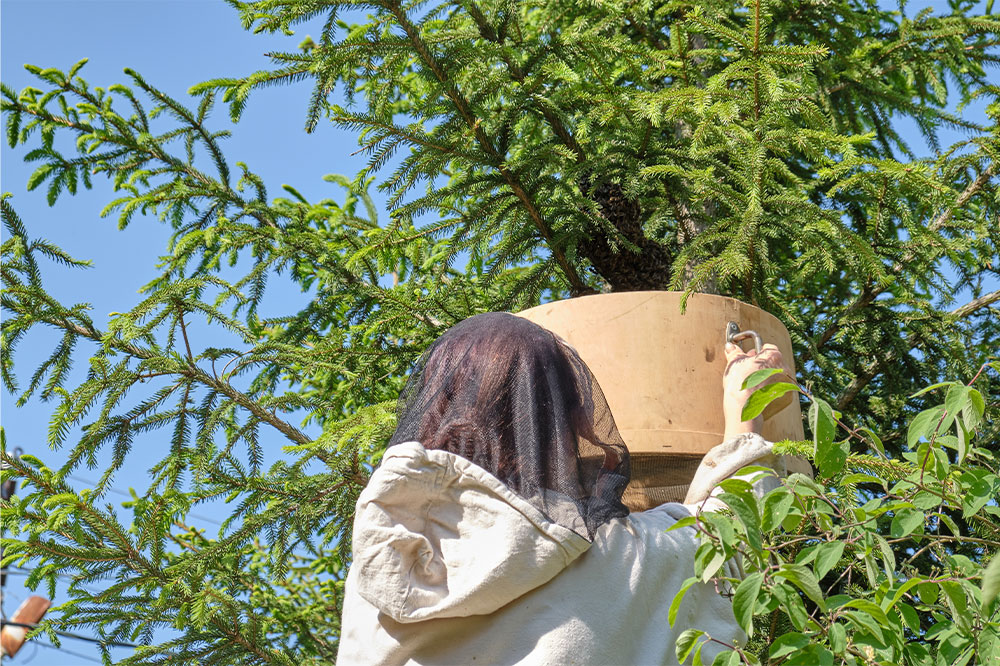Things to Know about Bee Nest Removal
A beehive can be a delightful sight unless you see them nesting inside the walls of your house or in the backyard. When you see these buzzing insects spinning around, avoid panicking. Understand that bee swarms are not looking to sting. They are merely seeking a new home, and till they find a new one, they will hover around your place. However, the bees might become aggressive if bothered.
Preliminary precautions
While being nonchalant is the best solution, having a local bee nest removed or managed safely is possible. More importantly, you don’t always need a pest control service to handle the situation.

Here are some precautions to take before you approach honey beehive removal service providers.
Safe distancing
The first step should be to keep children and pets away. Make sure they do not play around the particular area.
No chemical treatment
Do not spray a pesticide or any other chemicals. This could instigate the bees and is completely unnecessary. Also, knowing that honey bees are already on the verge of extinction, let’s try preserving them and, if possible, look for honey beehive removal and relocation rather than destruction.
Do not bother the bees
Striking the hive with a stick or throwing stones at the swarm will likely provoke a strong defensive response from the bees.
Look for entry points
Determine the entry point for the bees if a swarm is located inside the house. However, do not try to obstruct access to the hive, as this could result in the bees escaping into other areas of the house.
Despite all precautionary measures, local bee nest removal or management is not something for the unequipped to try. Getting rid of bees may require consulting a local beekeeper or honey beehive removal service providers.
Locating a local bee nest removal service
The following points will direct you when locating and consulting a beekeeper:
Most beekeepers deal with honey bees and not wasps (also known as yellow jackets). You can send a photo to a beekeeper to confirm what you have, but only if it’s safe.
Beekeepers will remove the bees with safe techniques, and sometimes free of charge. Be patient and wait for the beekeeper to arrive. They cannot necessarily drop everything and come to the rescue immediately.
If a beekeeper agrees to help you, but the swarm moves on before they arrive, let them know as soon as possible and prevent them from journeying to assist you.
Many local authorities offer bee hive removal free of cost. At times, beekeepers may charge for local bee nest removal. It would help if you always asked about their fees and procedures and how long it will take for assistance to arrive.
A call-out fee may be charged if the bees leave their own accord just before a beekeeper arrives.
Also, it is worth knowing what methods they use, pesticide usage, and whether the bees would be harmed.
If you cannot find a local beekeeping group, try speaking with a local farmer. Some farmers have contacts with beekeepers who offer their hives for pollination services so that they may be of help.
Another way to find a local bee nest removal service would be to seek out a local honey supplier or beekeeping supplies near you, as they are bound to have some references and contacts.
Preventing future invasions
Here’s what you can do to prevent honey bees from setting up a local bee nest in the future. These don’t ensure fail-proof security against them but might minimize the chances of swarming to a great extent.
Seal cavities
The key to preventing local bee nests is to understand that honey bees look for cavities to reside in. Inspect your house and outbuildings to identify all potential access points to cavities and seal any openings to this cavity with expandable foams, depending on the location and depth of the holes.
Alter the carpentry of your home
If required, fix those sagging and rotten floor joists. The voids need to be repaired and sealed properly to prevent bee entry.
Spraying the scout bees
Use sprays on bees whirling around your home will prevent them from informing the swarm of the potential nesting spot. As a result, the buzzing guests remain uninvited.
Ensure clutter-free backyards
Unused appliances or lawn equipment found in yards can attract honey bees since they offer prospective shelter for a hive to thrive.
Make sure to eliminate any honeycomb remains from the previous invasion. The pheromone scents left on the honeycomb invite newcomers.
Most of the swarms are temporary. They usually leave on their own in a day or two. If the honey beehive is settled in an out-of-the-way place where the bees can be left undisturbed for a few days, one approach is to give them a wide area or call for help. Till then, enjoy the opportunity of witnessing this architectural wonder of nature.

